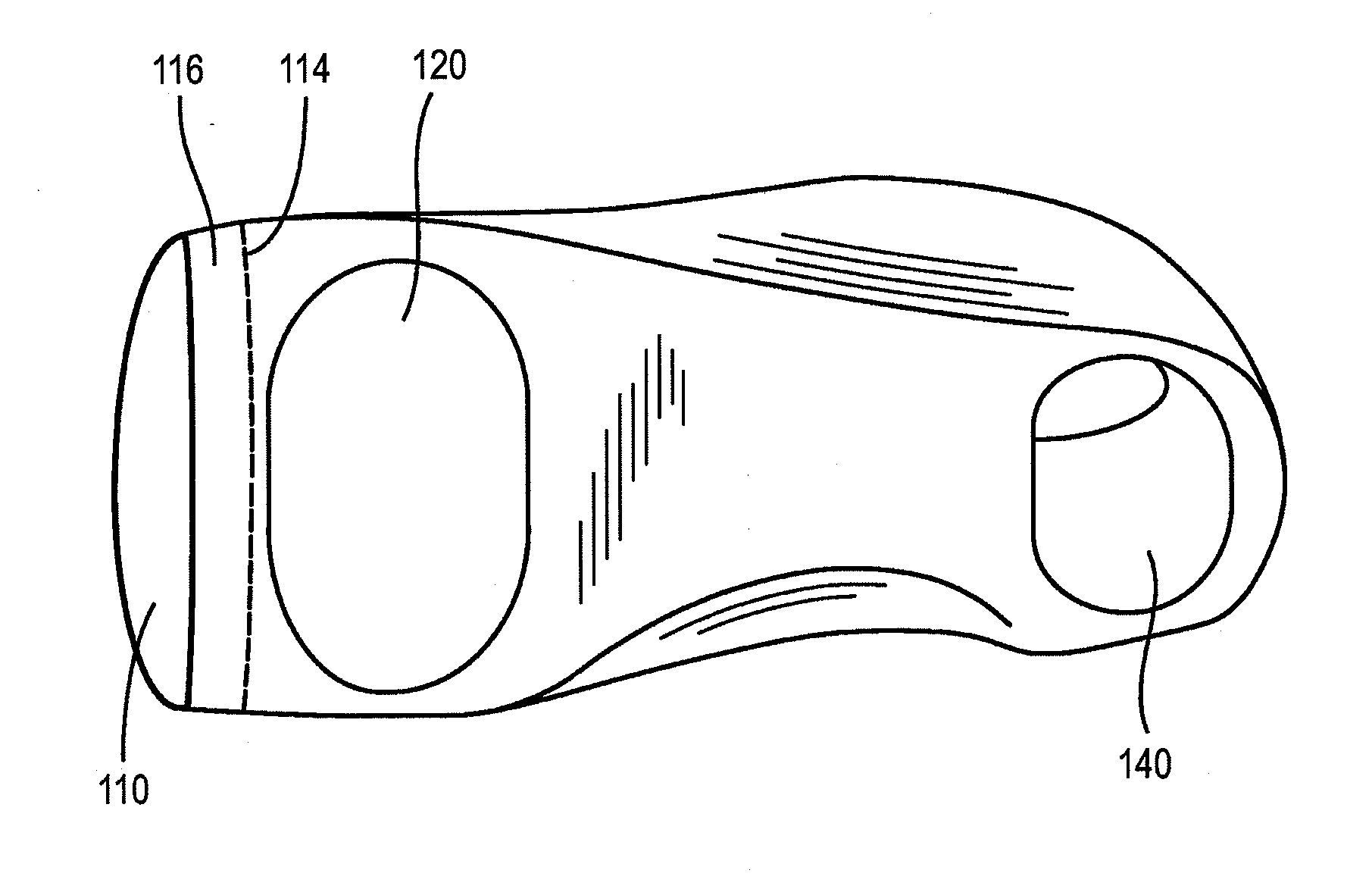Debris Inhibitor For Shoes And Methods For Making Same
a technology of debris inhibitors and shoes, which is applied in the direction of uppers, insoles, bootlegs, etc., can solve the problems of concomitant risk of infection, inability to accommodate the contact between the player's body and the surface of the artificial surface, and create abrasions, so as to inhibit the effect of debris
- Summary
- Abstract
- Description
- Claims
- Application Information
AI Technical Summary
Benefits of technology
Problems solved by technology
Method used
Image
Examples
Embodiment Construction
[0036]The material used in the present invention can be any material capable of multi-directional stretch. The material should be capable of being formed into a seamless tube via machine weaving. The machine woven material tube is formed prior to the cutting.
[0037]In a preferred embodiment, the material is formed from a ply nylon and elastic combination. As an example, the ply nylon can be a two-ply or a three-ply nylon. Furthermore, the ply nylon and elastic material should be in a ratio that permits the desired multi-directional stretch necessary for the invention. The ratio of ply nylon to elastic is in the range of about 50% to about 50%; about 60% to about 40%; about 70% to about 30%; about 80% to about 20%; about 90% to about 10%; about 95% to about 5%; and about 97% to about 3%, respectively.
[0038]It will be appreciated by those of skill in the art that other materials are encompassed that allow for the multi-directional stretch of the present invention. Without limitation, t...
PUM
 Login to View More
Login to View More Abstract
Description
Claims
Application Information
 Login to View More
Login to View More - R&D
- Intellectual Property
- Life Sciences
- Materials
- Tech Scout
- Unparalleled Data Quality
- Higher Quality Content
- 60% Fewer Hallucinations
Browse by: Latest US Patents, China's latest patents, Technical Efficacy Thesaurus, Application Domain, Technology Topic, Popular Technical Reports.
© 2025 PatSnap. All rights reserved.Legal|Privacy policy|Modern Slavery Act Transparency Statement|Sitemap|About US| Contact US: help@patsnap.com



